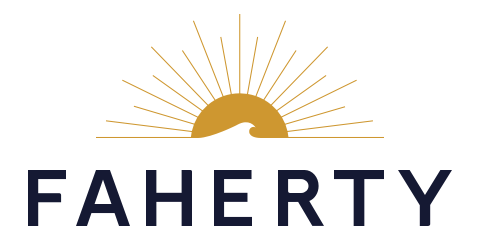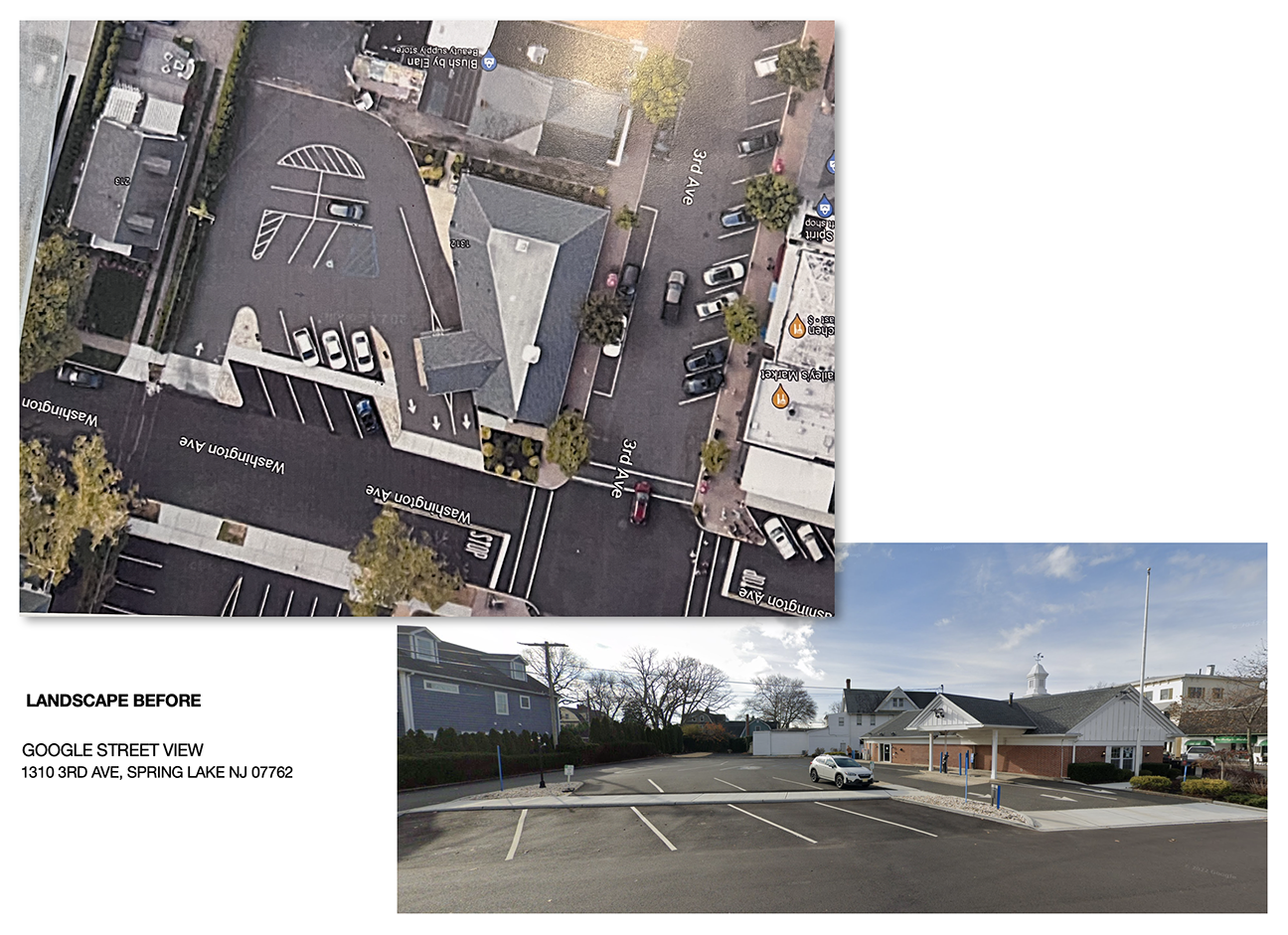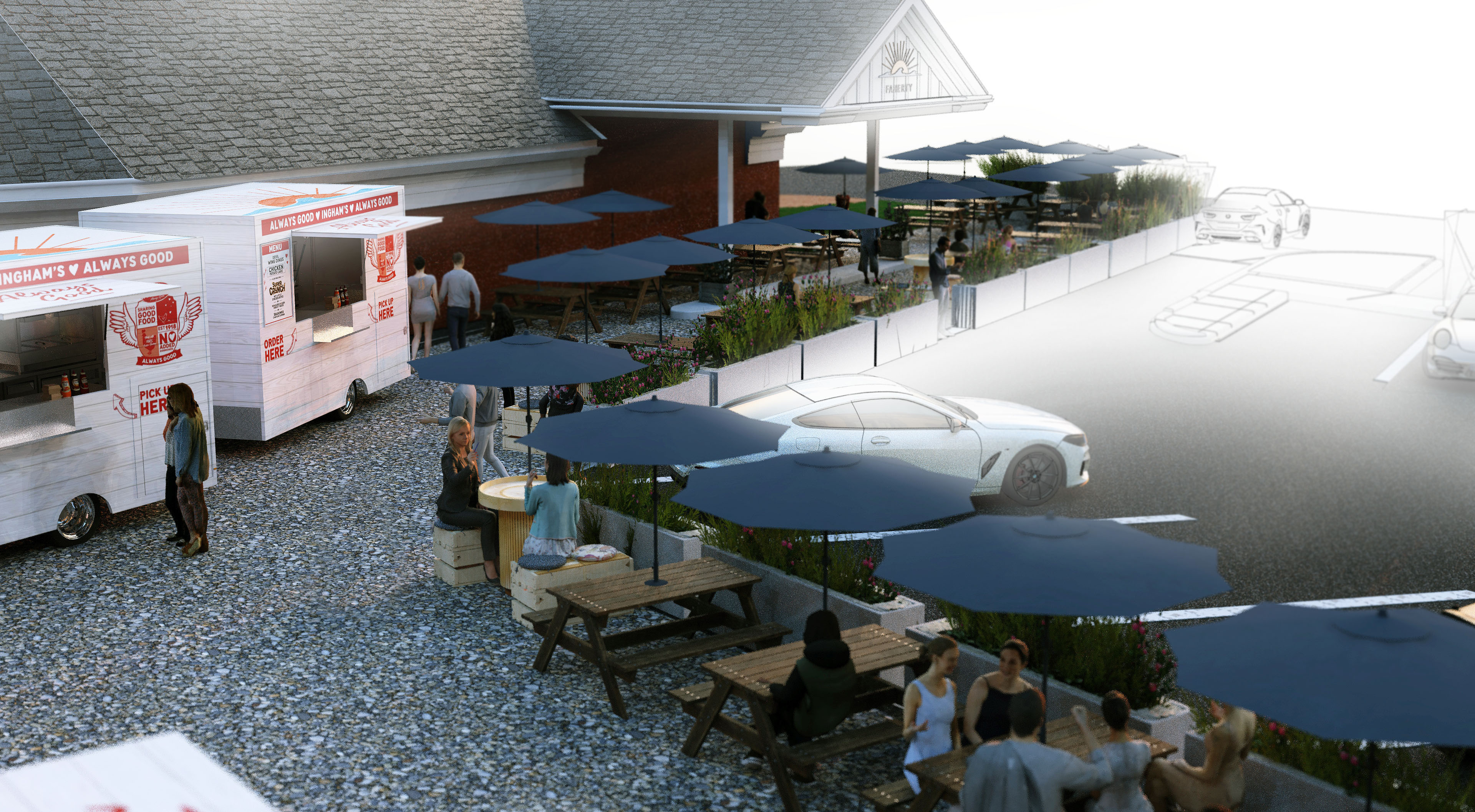

Converting a Bank into a Retail Store

Link
https://fahertybrand.com/
Industry
Retail
Product
Retail Store Design

What i did
Cad Conversion Industrial design 3D Rendering

Design Team
Programs: SolidWorks, Keyshot Humans: Timothy, Astrit Maksuki, Kerry Docherty

Product Overview
Faherty Brand, known for its coastal-inspired apparel and commitment to sustainability, commissioned the adaptive reuse of an existing bank building into its flagship retail store. The goal was to create more than a shopping destination — a space where retail meets community. The project reimagined the interior into a warm, inviting environment using natural materials and open-plan merchandising, while introducing an outdoor event and activation space to reflect Faherty’s lifestyle-driven ethos.

Product Info
The Faherty Flagship transforms a historic bank building into a coastal-inspired retail and community hub. The design balances immersive shopping with experiential engagement, featuring natural material interiors, open-plan merchandising, and a seamless customer journey. An adjoining outdoor activation space expands the brand’s lifestyle presence with shaded dining areas, a food truck zone, DJ booth, and landscaped lounges. My role included CAD conversion, industrial design, and 3D rendering to translate 2D architectural drawings into actionable design visuals. Completed in 2024 with a collaborative team of designers, architects, and zoning specialists, the flagship reflects Faherty’s ethos of sustainability, community, and modern coastal living.
SPECIFICATIONS
Project Type: Adaptive reuse of existing bank building into retail. Year: 2024 Location: Faherty Brand Flagship (bank building conversion). Scope of Work: CAD conversion of 2D architectural drawings. Event & Activation Space: Outdoor dining with picnic-style table. Parking Lot Adaptation: Dual-traffic flow.
PURPOSE
The Faherty Flagship was designed to go beyond retail, serving as a multifunctional space that embodies the brand’s coastal-inspired lifestyle and commitment to community. The purpose of the project was to adapt a historic bank building into a modern, inviting store environment while introducing an outdoor activation hub for events, dining, and music. This dual focus created a destination where shopping and community engagement coexist, reinforcing Faherty’s ethos of sustainability, authenticity, and experiential living.
PROBLEM
Converting an existing bank building into an open, coastal-inspired retail and community space presented major spatial and layout challenges, especially balancing heritage architecture with Faherty’s relaxed, sustainable aesthetic.
SOLUTION
I reinterpreted the original 2D CAD drawings into full 3D architectural renders for better spatial understanding. This allowed the team to visualize natural material palettes, optimize event flow, and maintain structural integrity while creating a seamless connection between retail and community activation.
Design Brief
The Faherty Flagship project set out to transform an existing bank building into a retail and community destination that reflects the brand’s coastal-inspired identity and sustainable values. The challenge was to reinterpret client-provided 2D architectural drawings into actionable 3D models that could guide spatial planning, validate design concepts, and ensure a seamless integration of retail and lifestyle components. Using CAD conversion, industrial design, and 3D rendering, I created a comprehensive visualization of the store’s interiors and the adjoining outdoor activation space. The design emphasized natural materials, open merchandising layouts, and a customer flow that supported both everyday shopping and larger community events. Beyond retail, the addition of a food truck zone, outdoor dining, a DJ booth, and landscaped lounge areas established the flagship as a hub for connection and cultural engagement, aligning with Faherty’s mission to merge commerce with community.




The Result
The completed Faherty Flagship successfully redefined a historic bank building into a modern retail environment and community hub that embodies the brand’s coastal-inspired identity. The interior’s natural finishes and open merchandising layout created an inviting atmosphere that elevated the shopping experience, while the addition of outdoor dining, food truck zones, and live music space extended the store’s role beyond commerce into cultural connection. My 3D visualizations provided the team with clarity on spatial flow, event activation planning, and architectural translation, ensuring alignment between design intent and execution. The result is a flagship that not only strengthens Faherty’s retail presence but also reinforces its ethos of sustainability, lifestyle, and community engagement.







Summary
The Faherty Flagship project transformed a historic bank into a retail and community hub that embodies the brand’s coastal-inspired identity and sustainable values. Through CAD conversion, industrial design, and 3D rendering, I helped translate 2D architectural drawings into actionable 3D visuals that guided spatial planning and concept development. The flagship blends natural, open-plan interiors with an outdoor activation space featuring dining areas, food trucks, and live music zones, creating a destination where retail and community coexist. The result is a flagship store that strengthens Faherty’s brand presence while fostering authentic connections with its customers.







Lorem ipsum dolor sit amet, consectetur adipiscing elit. Suspendisse varius enim in eros elementum tristique. Duis cursus, mi quis viverra ornare, eros dolor interdum nulla, ut commodo diam libero vitae erat. Aenean faucibus nibh et justo cursus id rutrum lorem imperdiet. Nunc ut sem vitae risus tristique posuere.
What is Google Ads?
Google Ads (formerly known as Google AdWords) is an online advertising platform that allows businesses to display ads on Google’s search engine and its vast network of partner websites. Advertisers bid on keywords relevant to their products or services, and when a user types in a related search query, your ad may appear at the top of the search results.
The beauty of Google Ads lies in its pay-per-click (PPC) model: you only pay when someone clicks on your ad, making it a cost-effective option for many businesses, especially those just starting out.
How Does Google Ads Work?
Google Ads operates on an auction-based system, which means your ads compete against others who are targeting the same keywords. Here’s a simplified breakdown of how it works:
- Keyword Selection: You choose the keywords you want to target based on what people are searching for.
- Bidding: You set a maximum bid, which is the amount you're willing to pay for a click on your ad. The higher your bid, the more likely your ad will be shown.
- Ad Rank: Google evaluates ads based on a combination of your bid, the quality of your ad, and the relevancy of your landing page. This is where you can score big with great ads, even if your bid isn't the highest.
- Ad Display: When someone searches for one of your targeted keywords, your ad may appear in the search results. The user clicks on your ad, and you pay the bid price.
Why Google Ads is So Effective
Google Ads has numerous benefits that can make it a game-changer for your digital marketing strategy. Some of the key reasons include:
- Highly Targeted: Google Ads allows you to target users based on keywords, location, device, time of day, language, and more. This means you can serve your ads to the right people at the right time.
- Measurable Results: With Google Ads, you get detailed insights into the performance of your ads. You can track impressions, clicks, conversions, and ROI, which makes optimization simple.
- Immediate Results: Unlike SEO, which can take months to show results, Google Ads can bring traffic to your site immediately. This is especially beneficial for businesses with time-sensitive promotions or seasonal offers.
- Scalable: Whether you’re a small business or a large enterprise, Google Ads can scale with your needs. You can start with a small budget and gradually increase it as you see what works.
Tips for Success with Google Ads
To maximize the effectiveness of your Google Ads campaigns, consider these tips:
- Focus on Quality Keywords: Select keywords that are not only relevant to your product but also match the intent of your potential customers. Use tools like Google Keyword Planner to identify terms with high search volume and low competition.
- Craft Compelling Ad Copy: Your ad copy needs to grab attention quickly. Focus on clear, concise messaging that highlights the value of your product or service. Use strong calls-to-action (CTAs) like "Shop Now" or "Get a Free Quote."
- Optimize Landing Pages: Ensure that your landing page is optimized for conversions. If someone clicks on your ad, they should be directed to a page that’s relevant to what they searched for, with a clear next step (e.g., form submission, purchase, or signup).
- Test and Tweak: Continuously monitor your campaigns and perform A/B testing on your ads, keywords, and landing pages. Small adjustments can lead to better results over time.
- Track Conversions: Set up conversion tracking to measure how well your ads are driving your business goals, whether that’s a sale, a form submission, or something else.
Conclusion:
Google Ads is an incredibly powerful tool for businesses looking to increase their online visibility, drive traffic, and generate leads or sales. By carefully crafting your campaigns, selecting the right keywords, and optimizing your ads, you can make the most of what Google Ads has to offer.
Ready to give it a try? Start small, monitor your results, and scale up as you go. With the right strategy in place, Google Ads could be the perfect addition to your digital marketing toolkit.
Call to Action:
Have you used Google Ads before? What has your experience been? Let us know in the comments below, or reach out if you have any questions about getting started with Google Ads!
This blog post uses rich text elements like headings, subheadings, and lists, which are compatible with Webflow's Rich Text Editor. You can easily copy and paste this into your Webflow blog and modify it further based on your needs!
